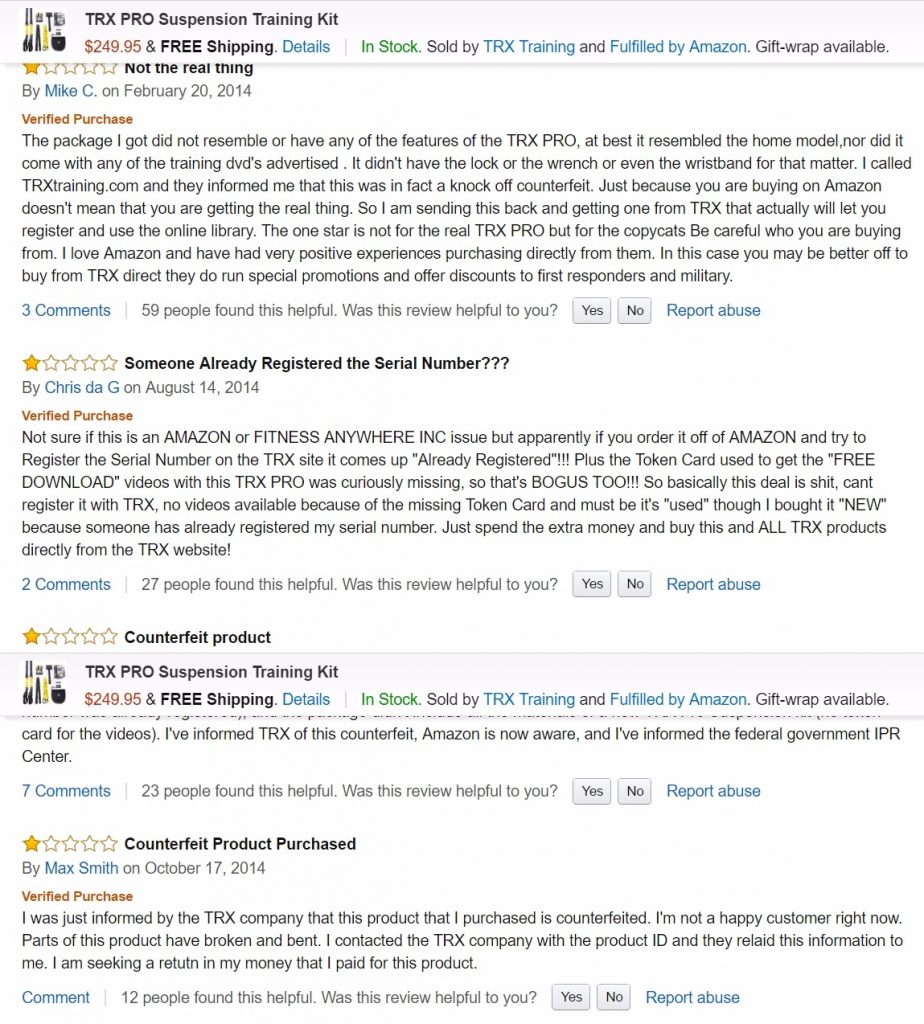Chinese Manufacturers: Sourcing Advice for U.S. Amazon Sellers

There’s a reason Chinese manufacturers are ranked #1 in the world.
Many U.S. Amazon sellers rely on Chinese manufacturers to get cheap prices and whiplash-inducing turnaround times on products.
As competition grows on Amazon, many U.S. brands and private labelers rely on relationships with Chinese manufacturers to stay price competitive. However, with all the pros–cheap prices, fast production–there are some risks.
We consulted Chad Rubin, CEO of Skubana, and CJ Rosenbaum, Amazon Sellers Lawyer, for their take on how U.S. Amazon sellers can build productive and trustworthy relationships with Chinese manufacturers.
 Part of the reason Chinese manufacturers have always taken a prominent place in American retail is because it’s really difficult to manufacture products in the US and also compete, says Amazon Sellers Lawyer CJ Rosenbaum.
Part of the reason Chinese manufacturers have always taken a prominent place in American retail is because it’s really difficult to manufacture products in the US and also compete, says Amazon Sellers Lawyer CJ Rosenbaum.
“In China, they’re geared up for manufacturing,” says Rosenbaum. “And at this point, they do it better, cheaper, and faster than [U.S. manufacturers]. Americans need to alter what we do to compete on a manufacturing level.”
Chad Rubin, CEO of Skubana, started a company called Crucial Vaccum in his garage and grew it into a million dollar company within a few years. He strongly values the relationships he’s built with Chinese manufacturers over the years.
 “China’s created an ecosystem when it comes to manufacturers. [Chinese manufacturers are] not known for their quality, but they have the ability and the cheap labor, and they can customize based on my needs.
“China’s created an ecosystem when it comes to manufacturers. [Chinese manufacturers are] not known for their quality, but they have the ability and the cheap labor, and they can customize based on my needs.
When I first started Crucial [Vacuum], I was trying to source things like vacuum bags and filters in the U.S. However, they would often refuse to accommodate a lot of my needs and requests.
Now, a lot of those vacuum places have gone out of business. [When I started working with manufacturers] in Asia, they were much more like partners and collaborators in the goods we were making together.”
Of course, just as with any overseas manufacturer, there are challenges to overcome–and a few potential obstacles in the future.
According to data from Payoneer, Chinese ecommerce sales volume increased +230% in just one year (2013-14).
As traditional U.S. retailers like Macy’s struggle, more and more Chinese manufacturers and brands choose instead to go directly to Amazon to reach U.S. customers.
“Chinese factories are going direct-to-consumers. There are two ways they do it–they sell from their factories to the U.S., or they essentially set up a fulfillment center in the U.S. and run their business from China,” Rubin says.
Amazon has claimed a direct interest in growing Chinese companies on the platform. Sebastian Gunningham, Global Senior VP at Amazon says, “[Amazon plans] to increase our [ability] to facilitate Chinese manufacturers creating their own brands for global consumers.”
So what’s the risk for U.S. sellers?
It doesn’t always happen, but there’s always the possibility that a manufacturer will create more batches of your unique product than agreed upon and sell it via distributors (or just by themselves) on Amazon. Or, they may just sell copies of the molds or tools used to create that product.
Rosenbaum has seen this happen with his Amazon clients.
“Let’s say there’s an American who sources and signs an agreement for Chinese manufacturers to work on his product. They make 10,000 products as agreed upon, and the American receives his shipment. Then, the manufacturer makes another batch and ships it to other people, who sell it on Amazon themselves.
That American finds a product just like his on Amazon half price and tries to knock those sellers out with counterfeit reports, but it takes forever. At that point, they could lose enough sales to go out of business.”
Sellers who don’t have an exclusive relationship with a Chinese manufacturer–which requires that they purchase massive volumes of units–will likely see more variations of their products online.
To be fair, it’s not just the manufacturers coming out with products that directly compete with yours and selling to distributors. Sometimes, it’s illegal copycats. Just check out the reviews for counterfeit TRX products below:

Other times, it’s just other sellers catching on to your product’s popularity, and creating their own version. Every retailer should be prepared for that practice to get accelerated on a marketplace as competitive as Amazon.
“When I first started making vacuum filters, I had a 6-month window where no one copied my products,” says Rubin. “Now we’re down to a 3-month window.”
When your relationship with your manufacturer is going well, you’ll enjoy a true partnership.
However, things can sometimes go wrong–and it’s nearly impossible to fight an uncooperative Chinese manufacturer from U.S. soil. Here’s how you can cover your bases before you sign those papers.
“Since we know [most Chinese manufacturers] don’t care about a U.S. judge, and they can just open a new seller account if you get one shut down, it’s important to take advantage of the ability to file your U.S. trademarks and patents internationally,” says Rosenbaum.
Part of the reason why this is so powerful is because trademark and intellectual property rights laws have been tightening up in China for the past few years. The most recent update was China’s new trademark law in 2014.
“You file for protection in the countries where you are at the biggest risk of having your rights violated,” says Rosenbaum. “If your rights do get violated, you can fight [the manufacturer] on their own turf, and threaten them there to get the authorities involved.”
Pro-tip: There’s one caveat–this probably won’t work as well if you are working with a manufacturer in a rural area. Rosenbaum has noticed more legal enforcement in more developed cities like Bejing and Shanghai.
Both Rubin and Rosenbaum agree that all sellers should fly out to China, personally meet suppliers, and start building their relationship in person.
“Traditionally, Americans have gone into China and built temporary relationships, and that’s not been a great thing. You should stay in touch with [your manufacturer(s)] and actually visit them. It will help you avoid a lot of problems.”
One of those problems? Accidentally signing on with a trading company instead of a factory.
During your visit, it’s important to build a solid relationship that’s not just about haggling for the lowest price.
“I don’t just work with factories on price–it’s more than just price,” says Rubin. “It’s your relationship. Will they prioritize you on the factory line? Will they accommodate special requests? I view my Chinese suppliers as partners, not just factories.”
It’s happened to many of the most successful sellers–3000 units of your products arrive in the mail from the manufacturer, and the majority of them are defective. The best way to avoid this scenario, according to Rosenbaum, is to order multiple samples beforehand.
“Anyone can send you a sample of one item and the rest could be duds,” Rosenbaum says. “When you buy samples, make sure you buy 15-20 so you can verify fit and accuracy. It’s definitely not easy to get your money back after you get the shipment.”
Of course, with any manufacturer, there will always be small defects to iron out over time. That’s why it’s important for sellers to pay attention to Amazon reviews, note any negative comments about the way a product is made, and make sure those changes are communicated to the manufacturer moving forward. Otherwise, you could get a message that your account’s suspended due to your Order Defect Rate.
This goes for any business. You may have a product that’s a hit now, but eventually, it will get old and consumers may lose interest. There are exceptions, but businesses must innovate to compete.
“Sellers need to aim for where the puck is going, not just where the puck is right now,” says Rubin. “If [Steve Jobs] stuck with the original iPhone model, then they would have gone out of business a long time ago.
But on Amazon, some sellers are just comfortable with the first iteration of their product–and eventually, their product is obsolete. Either lower the price to compete with all the knockoffs on the market or innovate and make it better–a premium product that makes it better than the last.”
Innovative products that are also high quality speak volumes about your trustworthiness as a seller. An added bonus? Products that also have a clear “social mission”.
Take for instance the company Love Your Melon, which sells beanie caps made in the U.S. and donates 50% of their profits to cancer patients.
In an ecommerce world as accelerated as Amazon, it can be tough to make products that stand out, but innovation is a key part of survival.
With their cheaper prices and amazing efficiency, Chinese manufacturers hold the key to a lot of Amazon seller’s hearts. While there are other successful manufacturing hubs in the world, such as Singapore and India, China is still holding the current #1 spot.
That being said, is there any benefit to prioritizing the U.S. as a manufacturing source?
Aside from the obvious potential to make more frequent (and cheaper) visits–the “Made in the U.S.A.” label hasn’t completely lost its power over consumers.
“There is a big move toward making some home appliances back in the U.S.,” says Rubin. “GE is now making dishwashers and washing machines in the U.S., furniture is getting made in North Carolina, and sweatshop free apparel is growing in LA.”
Another potential added bonus is the ability to police your brand more efficiently.
“I think it does add to a product when it’s made in the U.S.A. because that also helps make it a lot easier to get rid of your listing hijackers,” says Rosenbaum.
One of the biggest changes that may completely change the way Amazon sellers source their products is also one of the most contentious events this past year–the election of our new U.S. president.
“[Donald] Trump is going to be a big part [of the “Made in the U.S.” movement],” says Rubin. “There will most likely be policies coming out that may not be favorable to sourcing in China.”
According to CNN, Trump and his team are already discussing tariffs up to 10% on imports from countries like China.
Of course, we’ll have to wait and see what happens. But at the end of the day, a successful relationship with a Chinese manufacturer hinges on the basics: Make sure your legal bases are covered, build trustworthy relationships, and keep making your products better. These fundamentals will set any seller up for success in 2017 and beyond.
